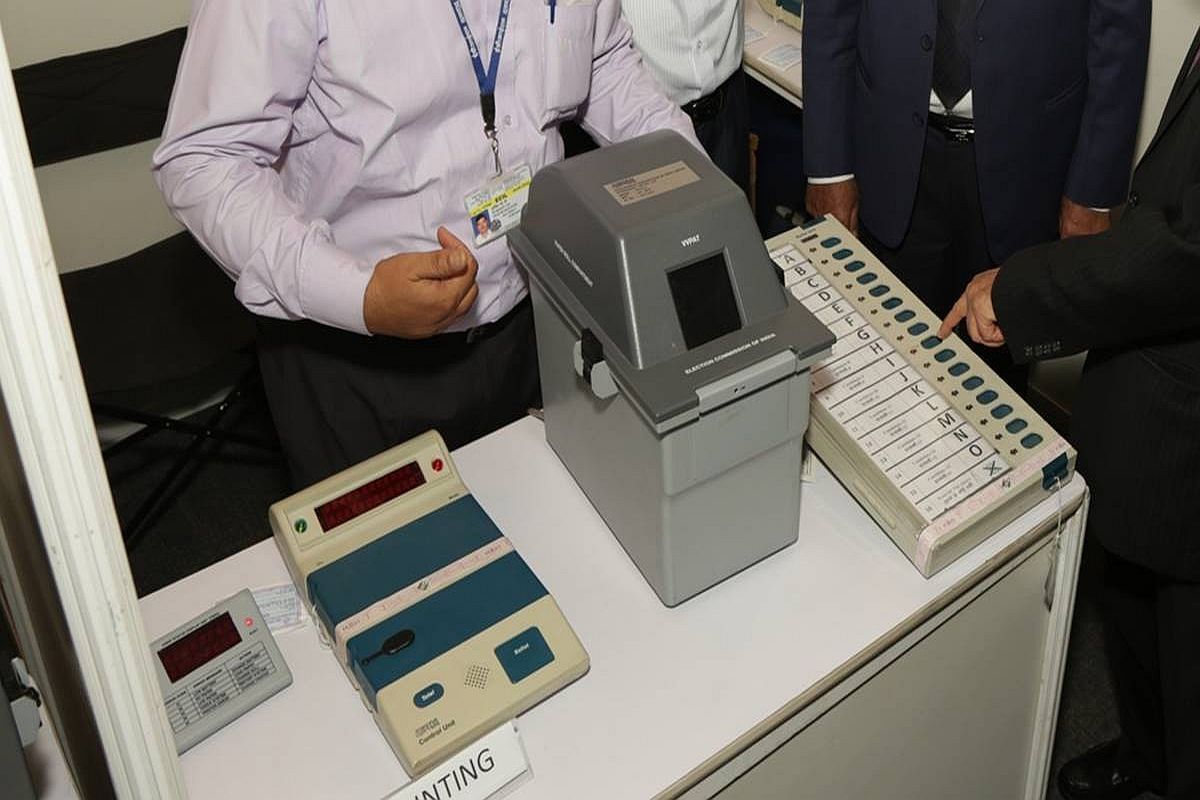Kashmir poll
The elections in Kashmir, beginning on Wednesday, signal a significant turning point for the region, as they take place for the first time in a decade under profoundly altered circumstances.
With comments like “jharu phir gaya” (broom has sprung), “jharu wale nu” (have voted for the candidate with broom as party symbol) and “duan partyyan te dukhi han” (we are unhappy with both the Congress and Shiromani Akali Dal), post voting Punjabis have been vocal in giving the opinions on the likely poll results.

(File Photo: IANS)
With stage set for counting of votes on Thursday for 117 Assembly seats in Punjab, “badlaav” (change) appears to have become the key word ahead of the poll results on 10 March with the change seeking Punjabis picking jharu (broom), the election symbol of the Aam Aadmi Party (AAP), over other contenders as the most likely to form the next government.
With comments like “jharu phir gaya” (broom has sprung), “jharu wale nu” (have voted for the candidate with broom as party symbol) and “duan partyyan te dukhi han” (we are unhappy with both the Congress and Shiromani Akali Dal), post voting Punjabis have been vocal in giving the opinions on the likely poll results.
And it’s the Arvind Kejriwal-led AAP which appears to have got the windfall resulting from the deep desire of average Punjabi for a “change”.
Advertisement
A visible frustration with the traditional parties – the ruling Congress and the SAD- who have ruled the state till now, appears to have pushed voters to pick AAP this election and give Kejriwal’s party a “mauka” (chance) to run the state.
Nearly all exit polls have predicted a clear majority for the Delhi Chief Minister Arvind Kejriwal-led AAP in Punjab. Most exits projected AAP will secure majority (59) seats on its own in the 117-seat Assembly. AAP’s chief ministerial face Bhagwant Mann is confident of forming the next government. In its internal assessment, AAP is hoping to win at least 70 seats.
The Congress and the SAD appear to be in competition for the second and third place as per the exit polls. But even before the exit poll results, the ruling Congress’ high hopes of retaining the power had dashed with the party – voted to power with nearly two-third majority (77 out of 117 seats) in 2017 – facing strong anti-incumbency despite the change of the Chief Minister (Charanjit Singh Channi replaced Captain Amarinder Singh) in the state.
Though Congress is still hoping for a miracle post voting, the most optimistic internal assessment by the Congress is not putting the party tally beyond 35 seats.
The other rival Shiromani Akali Dal (SAD) too appears to have failed in turning the anti-incumbency in its favor with AAP emerging as top choice for the voters seeking change of government. The SAD chief Sukhbir Badal, who fought elections in alliance with the Bahujan Samaj Party, claims the alliance would win over 80 seats.
But the SAD too is not expecting a majority on its own and is hoping for a return to power with the help of the Bharatiya Janata Party-led alliance in case of a hung Assembly.
The BJP, which in past elections had SAD as alliance partner, is contesting its first election as leader of an alliance with Captain Amarinder Singh’s Punjab Lok Congress and Sukhdev Singh Dhindsa-led Shiromani Akali Dal (Sanyukt).
And the saffron party’s aim is to improve its tally of three seats in 2017 polls and play kingmaker if there is a hung Assembly.
Advertisement